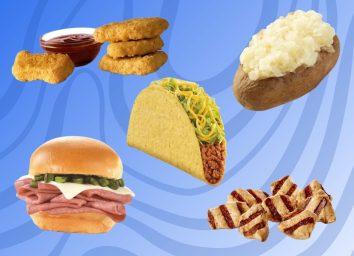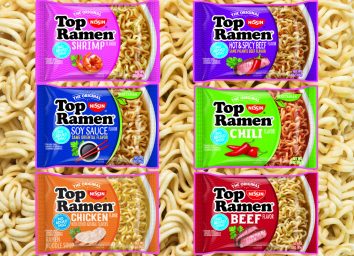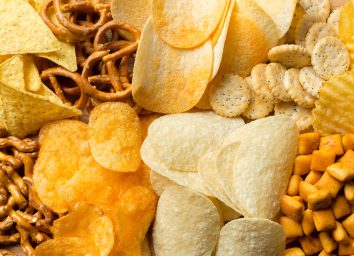25 Foods High in Sodium You Should Watch Out For
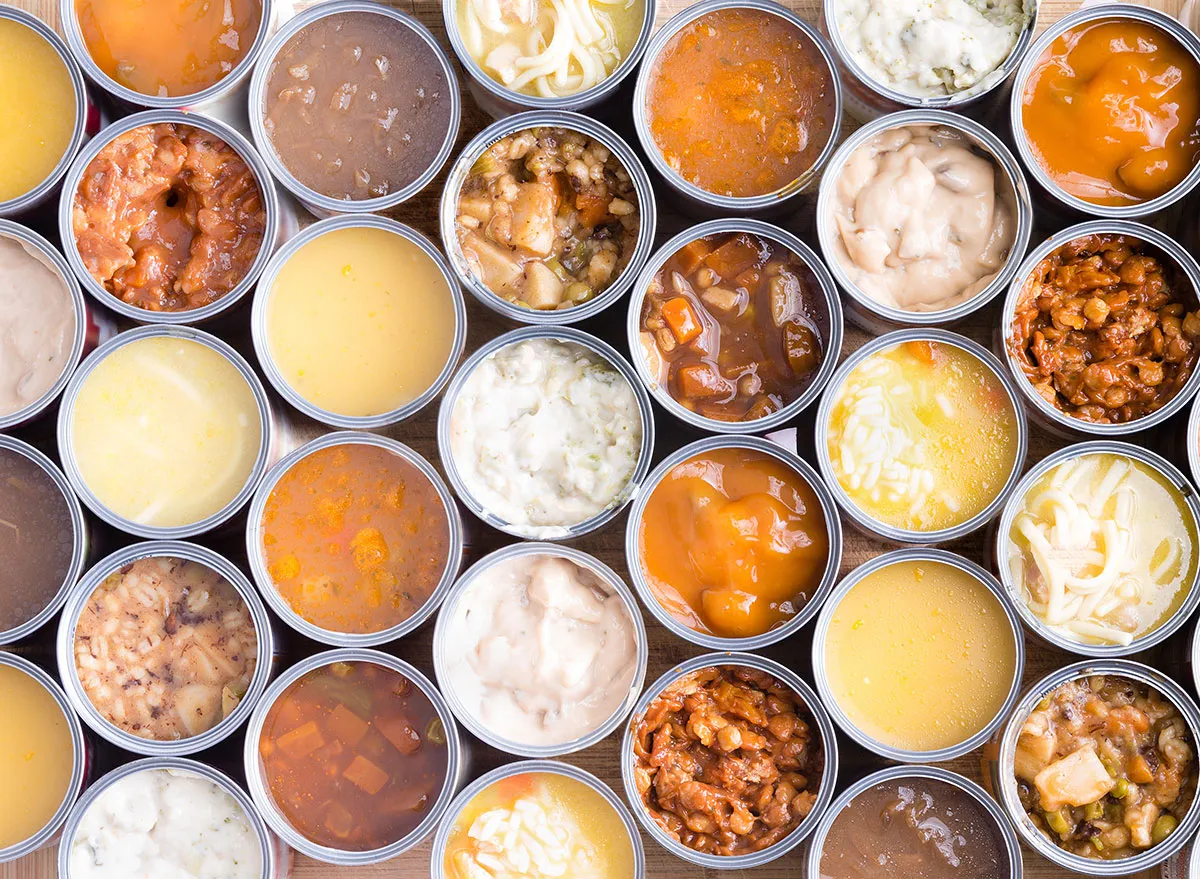
Americans love salt. So much so, in fact, that the average American eats 3,400 milligrams of sodium per day, which is way above the recommended limit. How is it that most of us are eating more than the recommended amount? Foods high in sodium make up a significant percentage of our diets.
How much sodium should we eat per day?
“The 2015-2020 Dietary Guidelines recommend that healthy adults limit their sodium intake to less than 2,300 milligrams per day,” says Malina Malkani, MS, RDN, CDN, registered dietitian nutritionist, spokesperson for the Academy of Nutrition and Dietetics, and Creator of the Wholitarian Lifestyle.
While experts recommend an upper limit of 2,300 milligrams to the average American, that number decreases if you have certain medical conditions. “The American Heart Association recommends that most adults (especially those with high blood pressure) ideally keep their daily sodium limit below 1,500 milligrams.”
What are the negative side effects of a high sodium intake?
Taking in too much sodium can have some major effects on your overall health. Malkani says excessive sodium intake can lead to increased risk of:
- bloating and water retention
- heart failure
- stroke
- high blood pressure
- osteoporosis
- headaches
- stomach cancer
- kidney disease
So it’s a good thing to keep track of your sodium intake and make sure you aren’t consuming too many high sodium foods.
Which foods high in sodium are the major contributors?
We get most of our sodium intake from pre-packaged foods.
“According to the Food & Drug Administration (FDA), about 75 percent of dietary sodium comes from packaged foods and foods consumed away from home,” says Caroline West Passerrello, MS, RDN, LDN, registered dietitian nutritionist and spokesperson for the Academy of Nutrition and Dietetics. “And according to the Centers for Disease Control (CDC), more than 40 percent of the sodium we eat each day comes from only 10 types of food.”
The 10 top food sources of sodium in the American diet include:
- bread and rolls
- pizza
- sandwiches
- cold cuts and cured meats
- soups
- burritos and tacos
- savory snacks (chips, popcorn, pretzels, snack mixes, and crackers)
- chicken
- cheese
- eggs and omelets
Whether you’re watching your blood pressure or want to get rid of a bloated belly, the first step is to reduce your intake of foods high in sodium and replace them with low-sodium alternatives. To help you cut back on salt, we put together a list of the common foods that contribute the greatest amount of sodium in the American diet, according to the CDC.
Here are 25 foods high in sodium and their nutritionist-recommended, low-sodium alternatives.
Breads and rolls
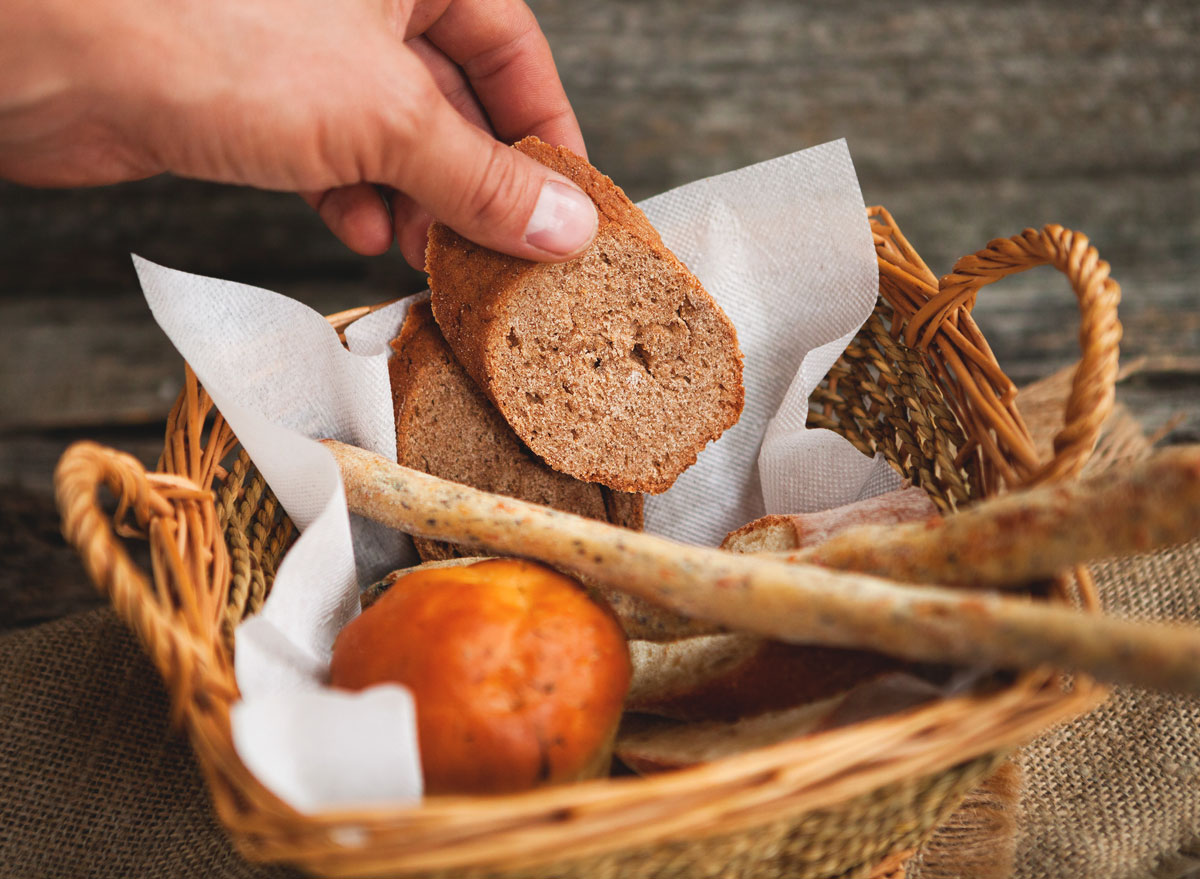
Sodium range: 80-230 mg per 1 slice white bread
Bread and rolls are the largest contributors of sodium in the American diet, according to the CDC. Manufacturers typically add high levels of sodium to bread for flavor and to maintain freshness. While bread doesn’t actually have the highest levels of sodium of all the foods on this list, the reason it ranks so highly is that Americans eat more of this food on a daily basis. (Think: toast for breakfast, bread on your sandwich for lunch, and a buttered roll for dinner.)
How to reduce your sodium intake: You have a couple of options when it comes to eating less bread high in sodium. You can look for low-sodium options, like Ezekiel 4:9 Low Sodium Sprouted Whole Grain Bread, which has 0 milligrams of sodium per slice. You can also choose to eat sandwiches open-faced. Using this tip can cut your sodium consumption by 50 percent each time you eat.
Cold cuts
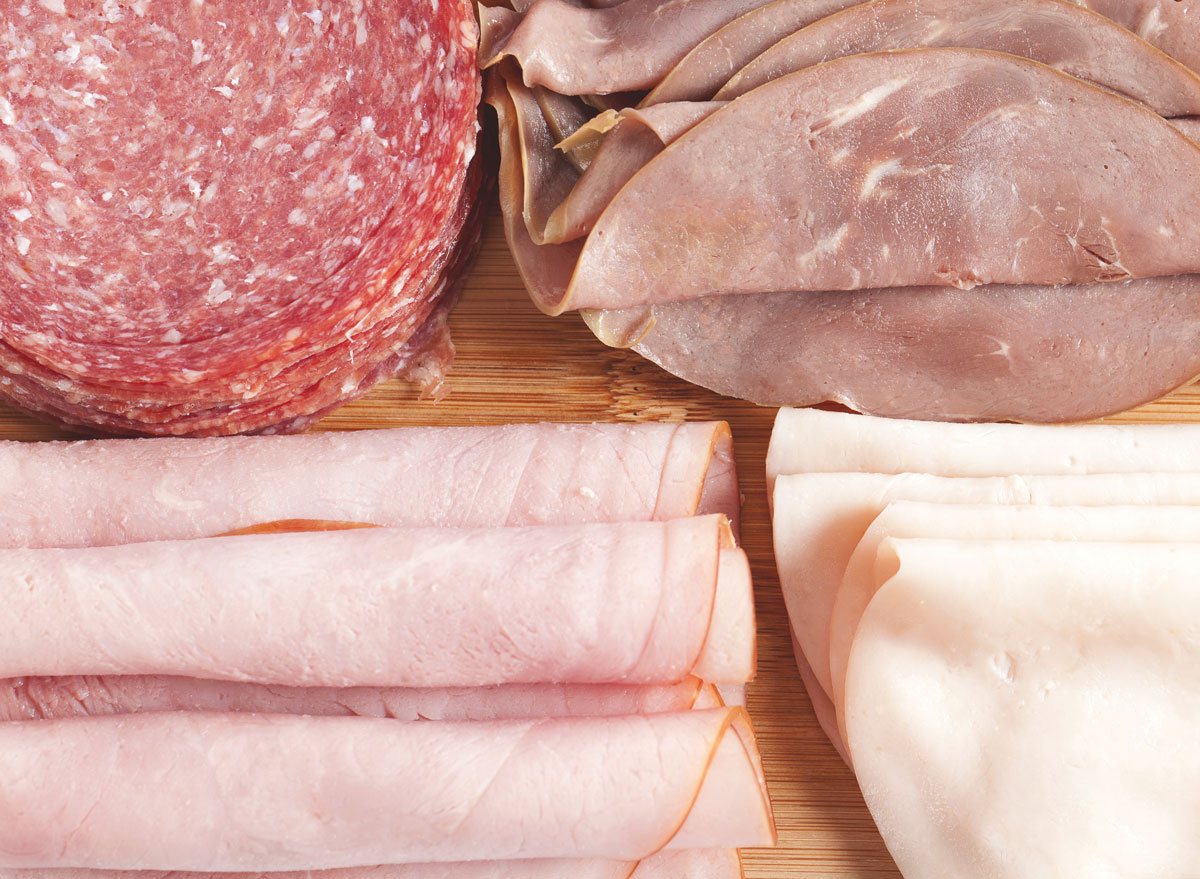
“Smoking or curing to preserve many deli meats is what makes some very high in sodium per serving,” says Maggie Michalczyk, RDN, Chicago-based registered dietitian nutritionist who runs the blog Once Upon a Pumpkin.
How to reduce your sodium intake: “Look for ‘low sodium’ meats (meaning that the product has less than or equal to 140 milligrams of sodium). Or, you can swap luncheon meats for more natural sources occasionally (baked chicken breast, canned tuna) or plant-based protein sources (tofu, canned beans),” says Caroline West Passerrello, MS, RDN, LDN, registered dietitian nutritionist and spokesperson for the Academy of Nutrition and Dietetics.
Condiments
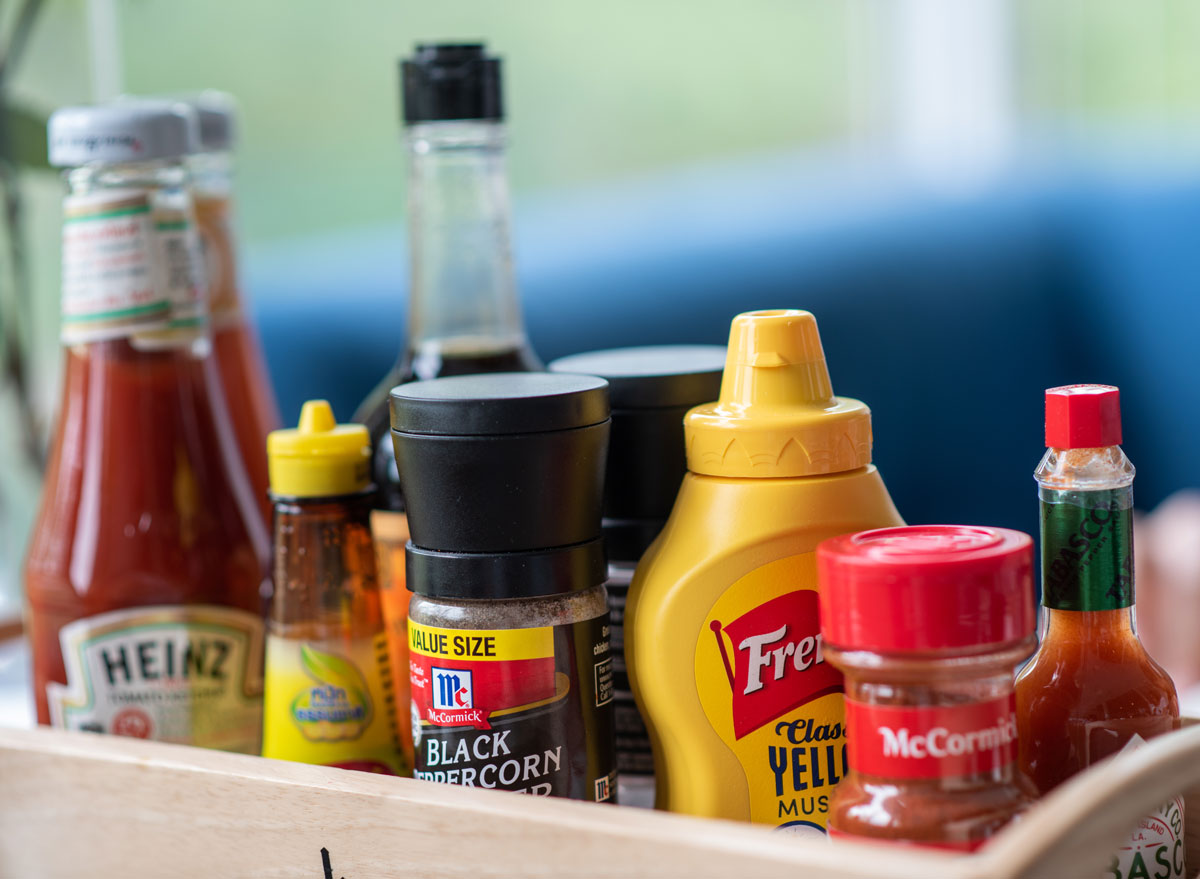
“Condiments such as barbecue sauce and steak sauce are often loaded with sodium, which is added as both a flavor enhancer and preservative,” says Malkani. “As a result, these sauces and tend to contribute excessive amounts of sodium to meals.”
How to reduce your sodium intake: Compare sodium levels in condiment brands before you buy and choose low-sodium versions. “It’s also helpful to reduce the amount of each condiment that you use in meals and snacks,” says Malkani.
Beef jerky
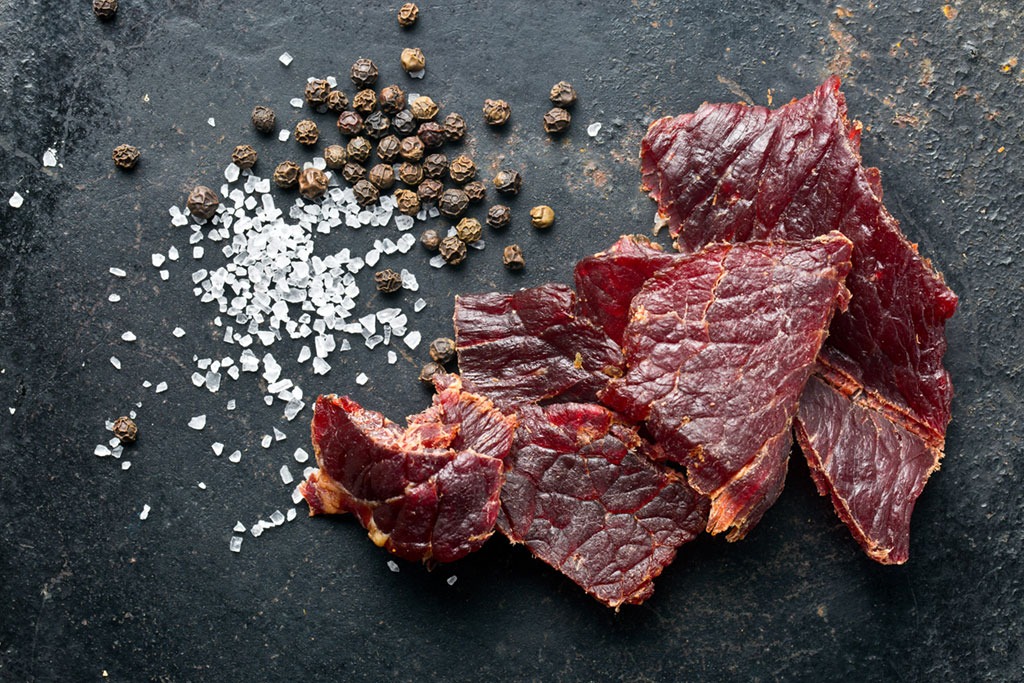
Beef jerky may be a gas station staple, but with high-protein diets becoming more popular, you may be snacking on it more frequently. However, it’s worth being mindful of the fact that jerky is dried and cured with high levels of sodium and preservatives.
How to reduce your sodium intake: Try grass-fed or organic beef jerky, which is usually lower in sodium. Plus, it’s also higher in nutrients.
Soy Sauce
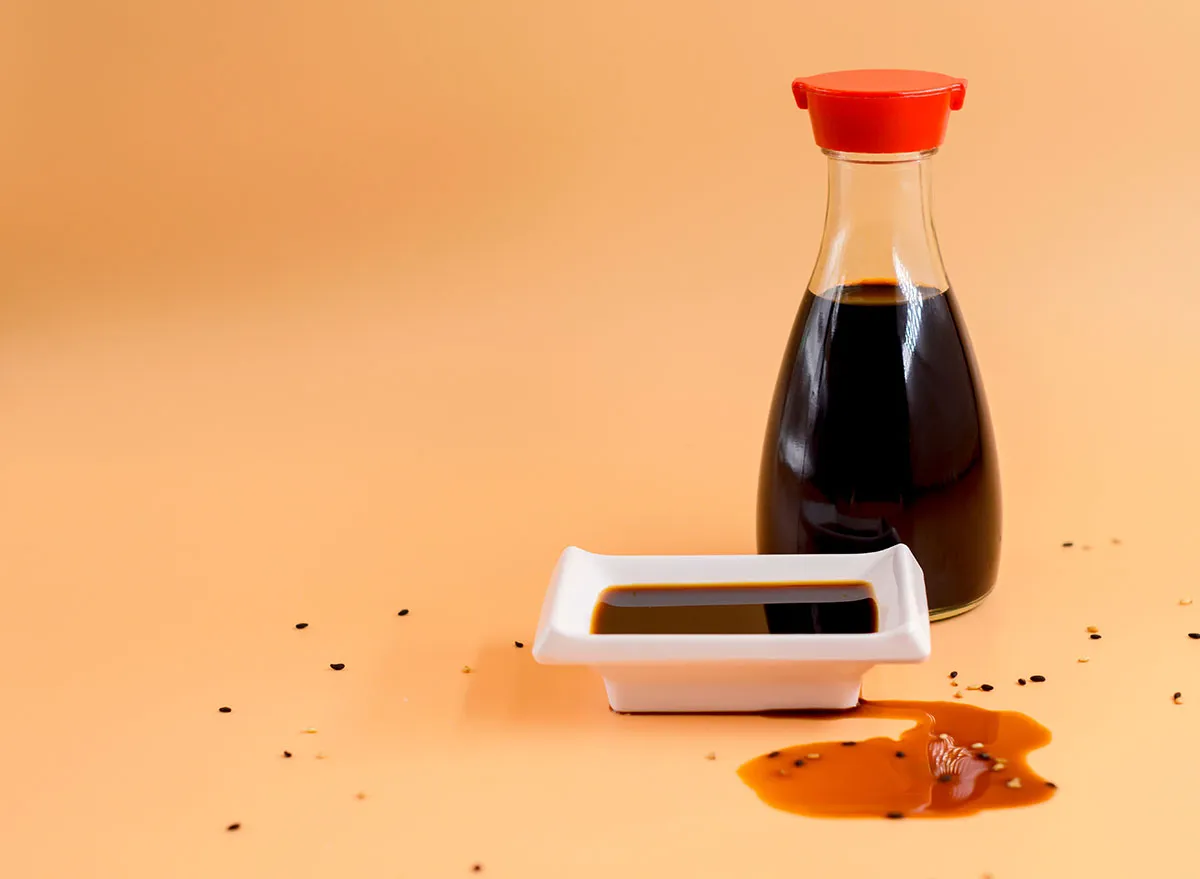
“The fermentation process [to create soy sauce] requires a lot of salt,” says Monica Auslander Moreno, MS, RD, LD/N, registered dietitian and nutrition consultant for RSP Nutrition.
How to reduce your sodium intake: “Even ‘reduced’ sodium soy sauce is still quite high in sodium, especially since we use so much more than a teaspoon (a serving) of it in cooking/eating,” says Auslander Moreno. “You can skip it and get flavor from wasabi, some pickled ginger, and other spices that go well in Asian cuisine cooking like red pepper, black pepper, cinnamon, cloves, and fennel.”
Or try liquid aminos, which have a similar flavor. “Swap it out for liquid aminos (Bragg’s is a good brand), found in most supermarkets these days,” says Deanna Wolfe, MS, RDN, registered dietitian nutritionist and founder of Dietitian Deanna, LLC.
Pork rinds
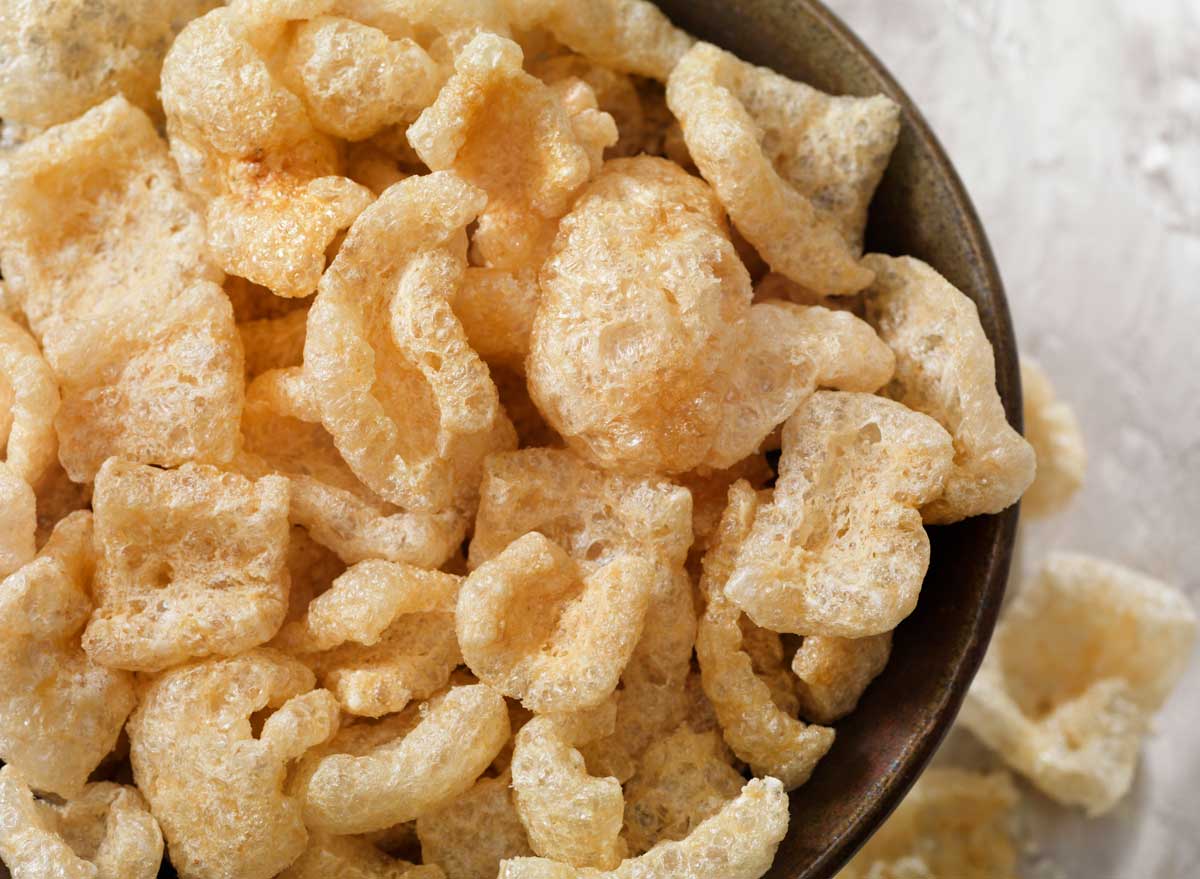
Pork rinds are having a renaissance with the popularity of the keto diet and other low-carb, high fat diets. But they’re also loaded with sodium.
How to reduce your sodium intake: Stick with plain pork rinds, as the flavored versions are more likely to have more sodium.
Pickles
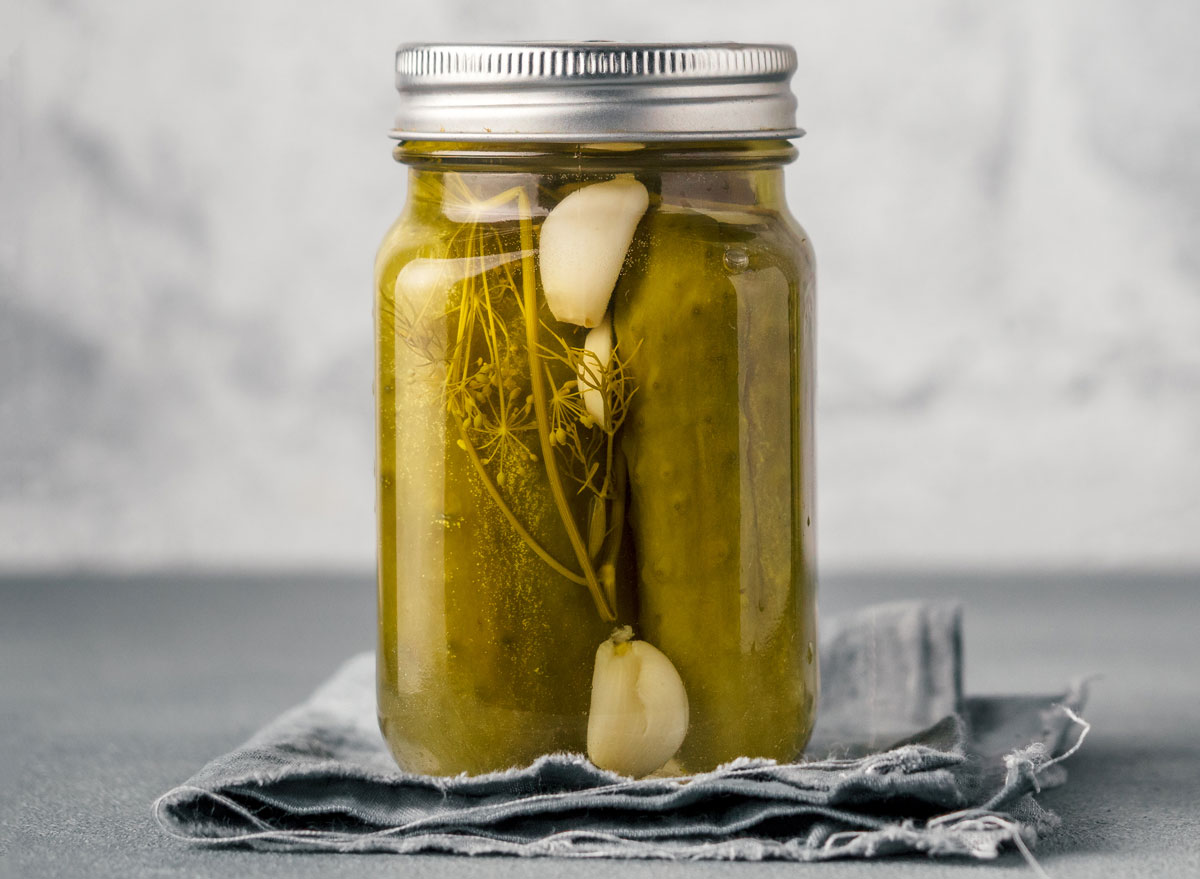
“The pickling process requires a fair amount of salt,” says Auslander Moreno.
How to reduce your sodium intake: Unfortunately there’s not much you can do to lower the sodium content of pickles.
“Although pickles are high in sodium, they also have gut-healthy probiotics! So just limit to one to two spears per day [if you’re watching your sodium intake],” says Auslander Moreno. “You can also ensure that the rest of your day’s intake of sodium remains appropriate.”
Cottage cheese
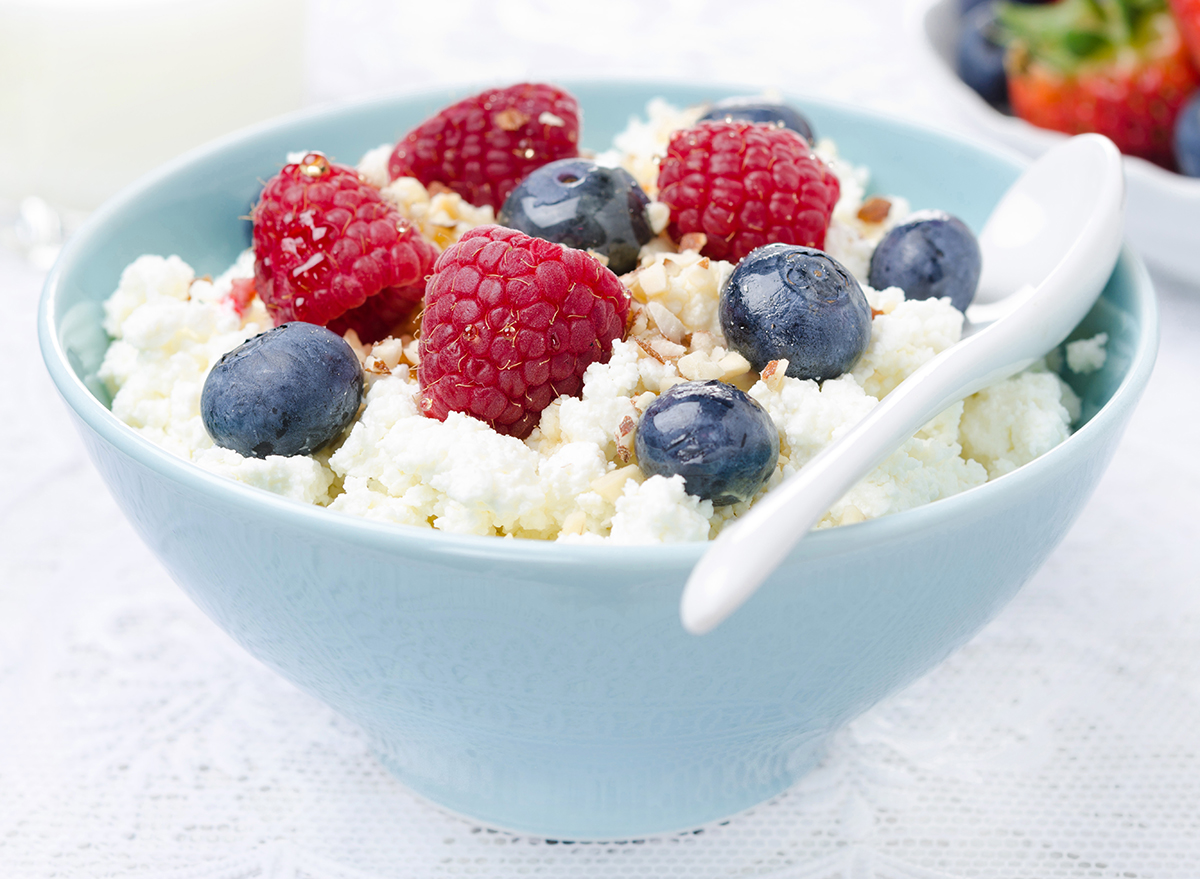
There are many fun ideas for how to eat cottage cheese, but they may not be worth looking into if you need to lower your sodium intake. Cottage cheese is one of the foods high in sodium because “salt enhances the flavor and contributes to the texture [of the curdled dairy product],” says West Passerrello.
How to reduce your sodium intake: “Swap for Greek yogurt a few times each week or do half yogurt and half cottage cheese,” says Wolfe.
Pretzels
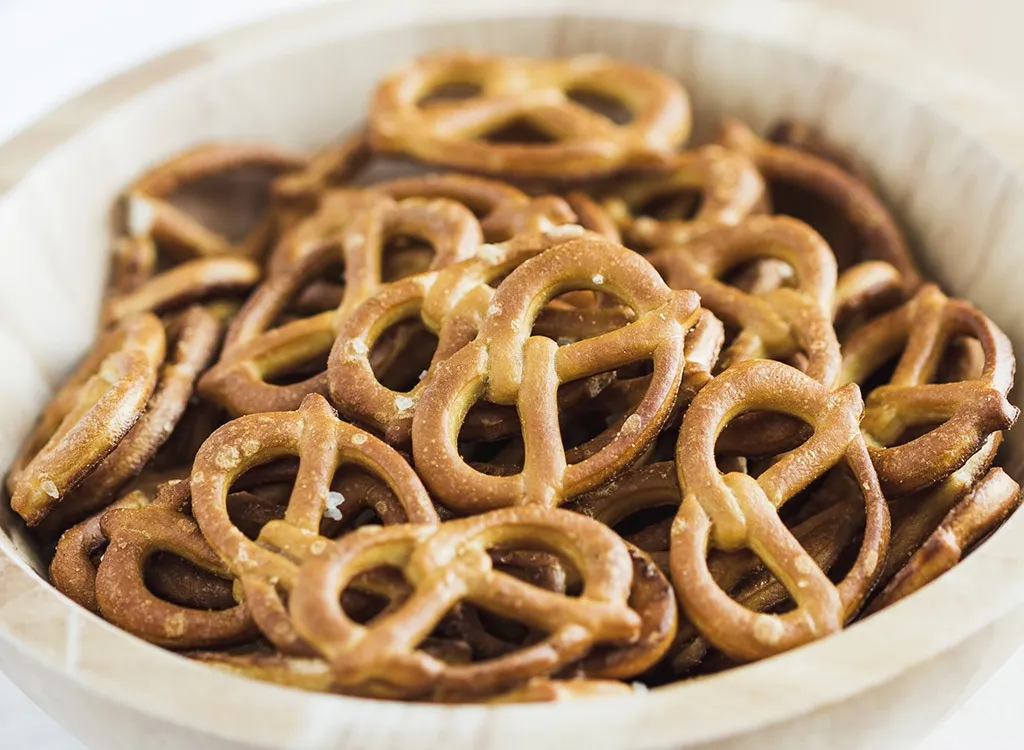
It’s no secret that pretzels are high in sodium—they’re visibly sprinkled with them. Not to mention, there’s also sodium within their batter.
How to reduce your sodium intake: Try the unsalted kind, like Unique Unsalted Pretzel “Splits.” And be wary of sourdough varieties, which may contain even more sodium. Another tip: mix your serving of pretzels with half unsalted pretzels.
Canned soups
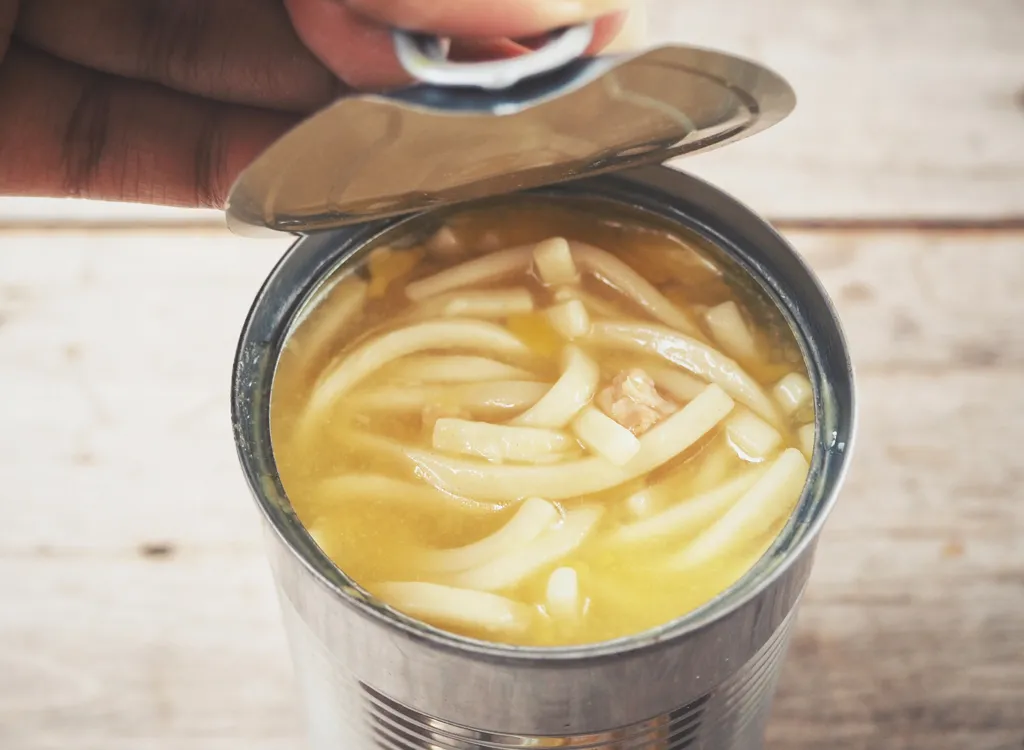
“Sodium is added to [soup to] help preserve freshness and enhance flavors,” says Auslander Moreno.
How to reduce your sodium intake: A lot of canned soups do have healthy ingredients, like legumes and veggies, but without salt they would taste rather bland and not last as long.
“If you choose to buy canned soups, look for ones with less than 140 milligrams of sodium per serving (remember that cans are usually 2.5 servings). Or, factor the canned sodium whammy into your whole day’s sodium intake; it’s not that big of a deal if the rest of your day is low sodium,” says Auslander Moreno.
Or look for ‘reduced sodium’ options.”‘Reduced Sodium’ soups have 25 percent less sodium than the original soup, making them a better option,” says West Passerrello. “For more control, try to make your own soup! Many are simple and come together quickly.”
Instant pudding
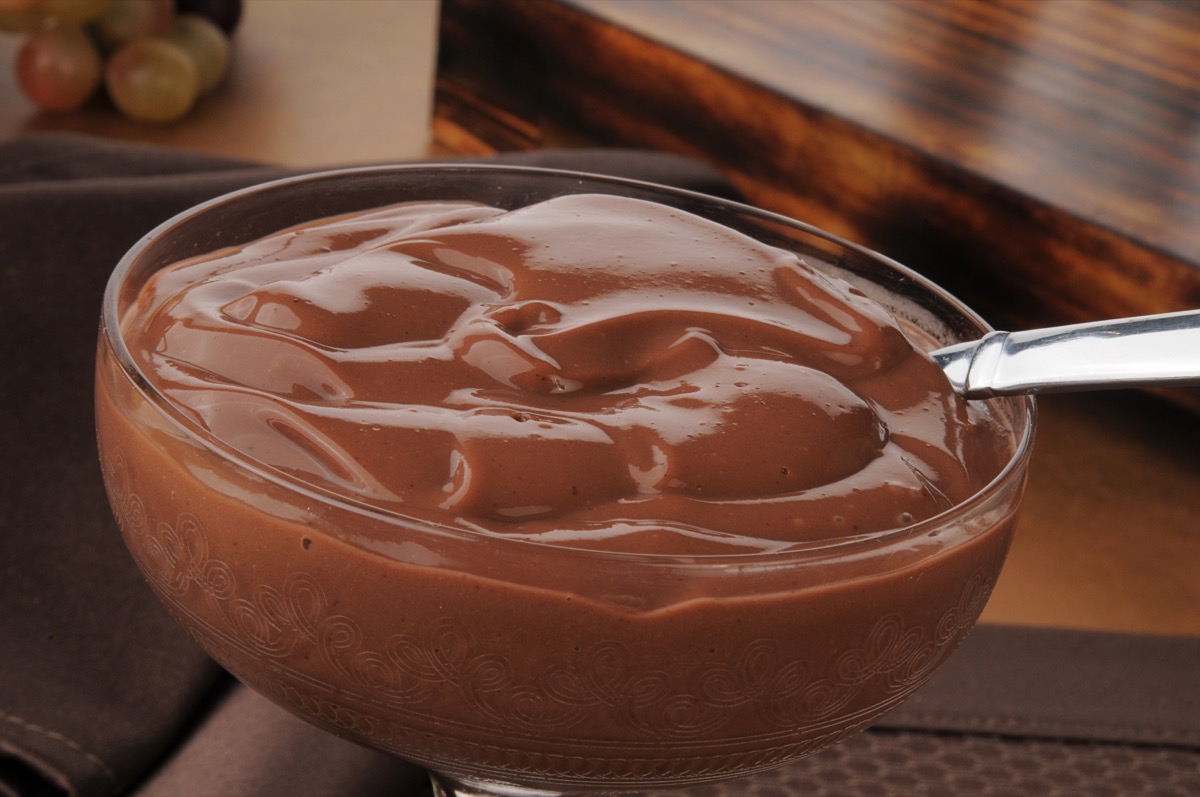
Pudding is, of course, a sweet dessert, so why is instant pudding one of the foods high in sodium? Because this kind of pudding is meant to live on a shelf, it’s packed with sodium and sodium-containing preservatives, like disodium phosphate and tetrasodium pyrophosphate.
How to reduce your sodium intake: Try using a mix that isn’t “instant.” Or better yet, make your own pudding at home that you can eat for either breakfast or dessert.
Frozen meals
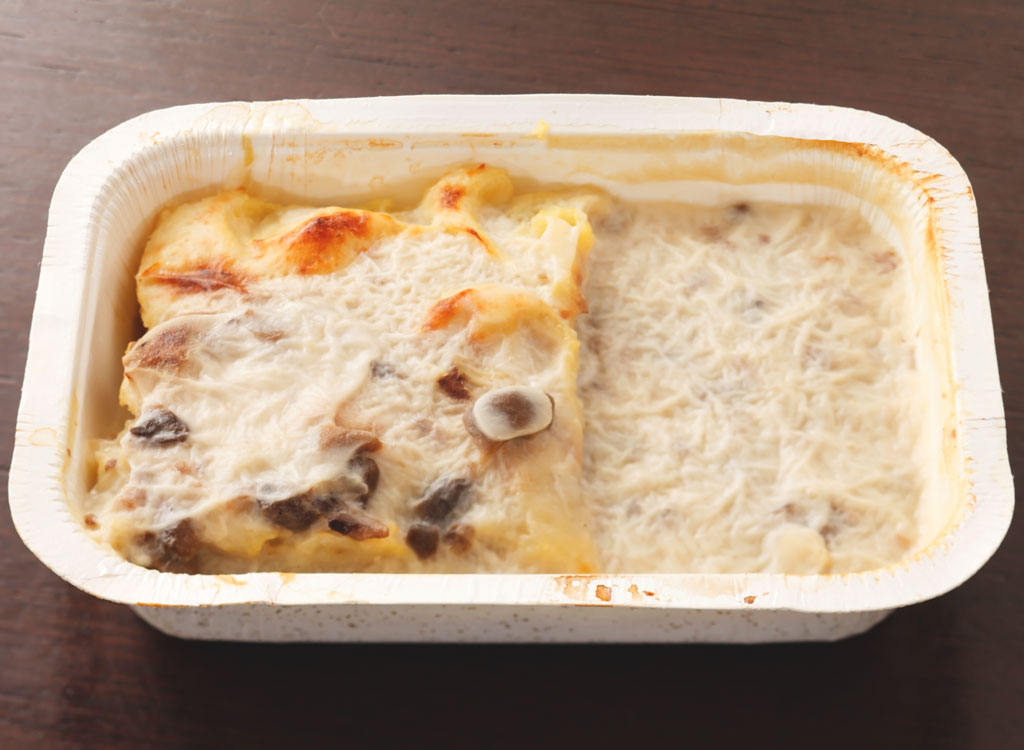
“Frozen meals are convenient; however an excessive amount of sodium is often added for preservation and flavor-enhancement,” says Malkani. “In some cases, a frozen meal can contain more than an entire day’s worth of salt.”
How to reduce your sodium intake: Look for “low sodium” options. Or skip them all together.
“Batch cook fresh meals ahead and freeze the extra in easy reheat and serve containers, so that you preserve the convenience factor of frozen meals and control the amount of sodium in each,” says Malkani.
Cheese
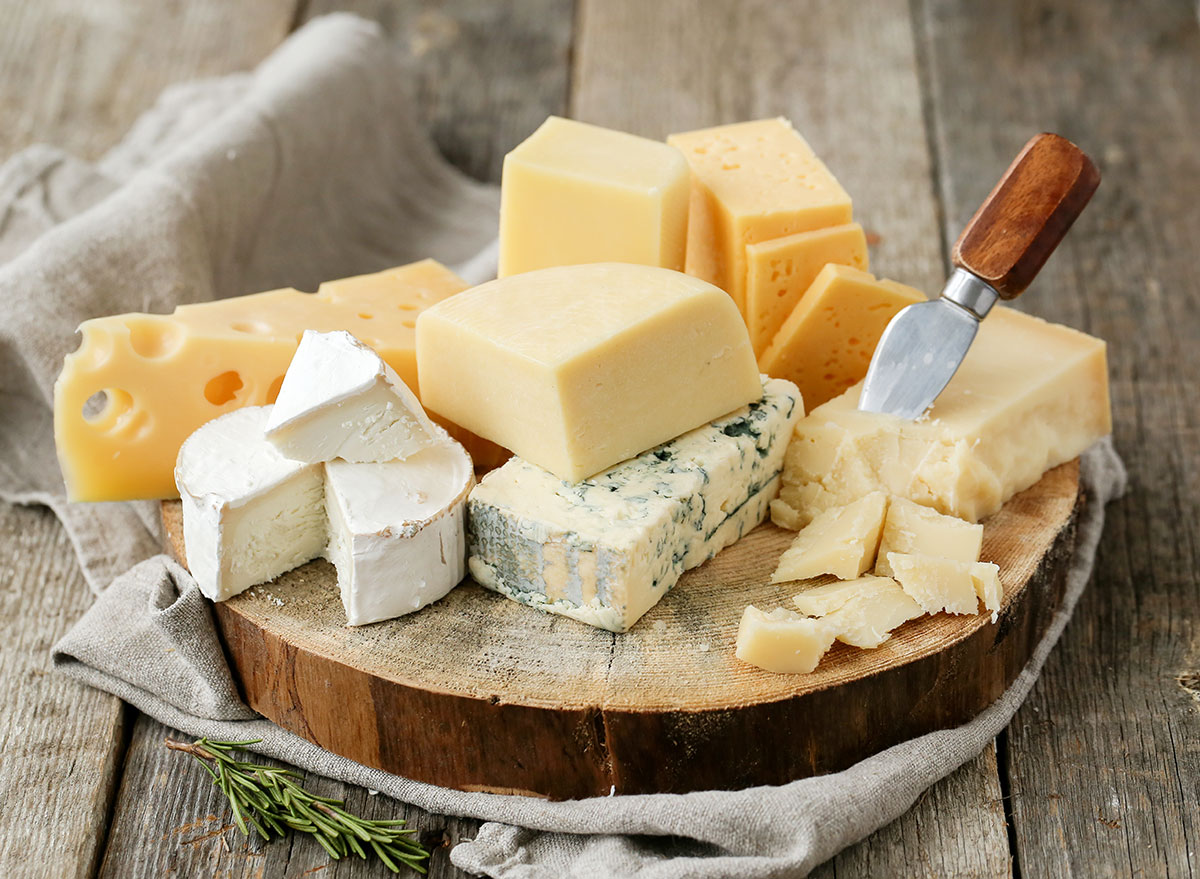
“Manufacturers add salt during production to prevent bacteria growth and to maintain an acceptable acidity level,” says West Passerrello.
How to reduce your sodium intake: Not all cheese is made with lots of sodium.
“Choose cheeses that are naturally lower in sodium; like goat cheese, whole milk mozzarella, ricotta and Swiss,” says West Passerrello.
Vegetable juice
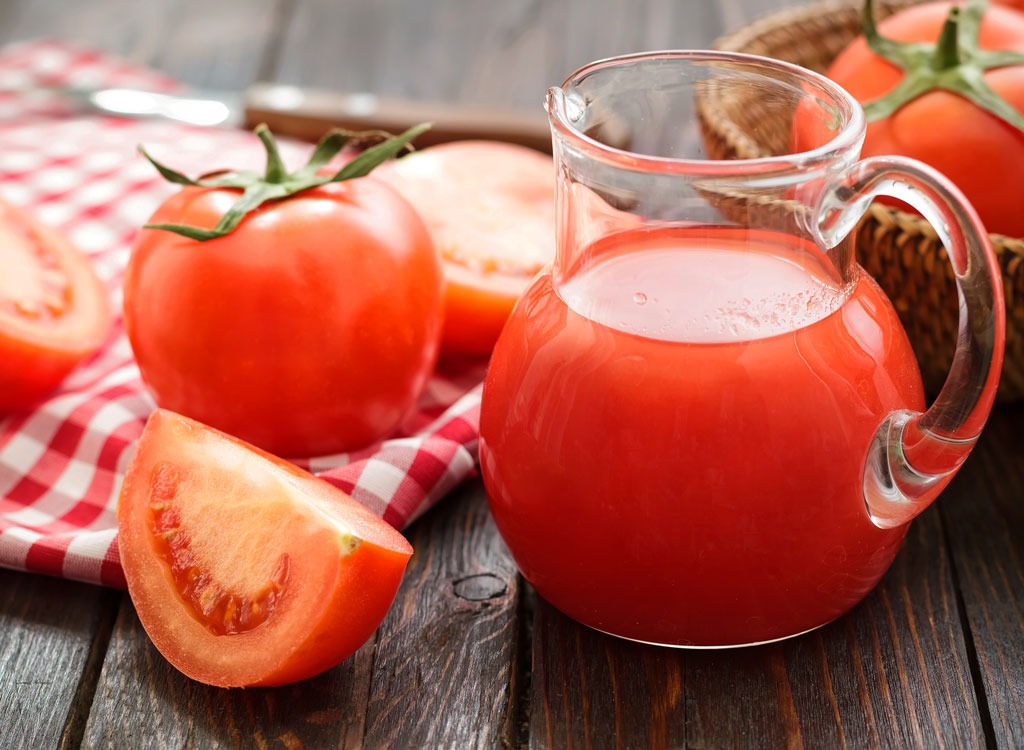
While you can get it canned or bottled, this stuff might seem healthy because it has “vegetable” right in the name. But if you take a look at the sodium content, you might be sorely mistaken.
How to reduce your sodium intake: Go with a low sodium version of your favorite brand. Or whip up your own at home.
Chicken
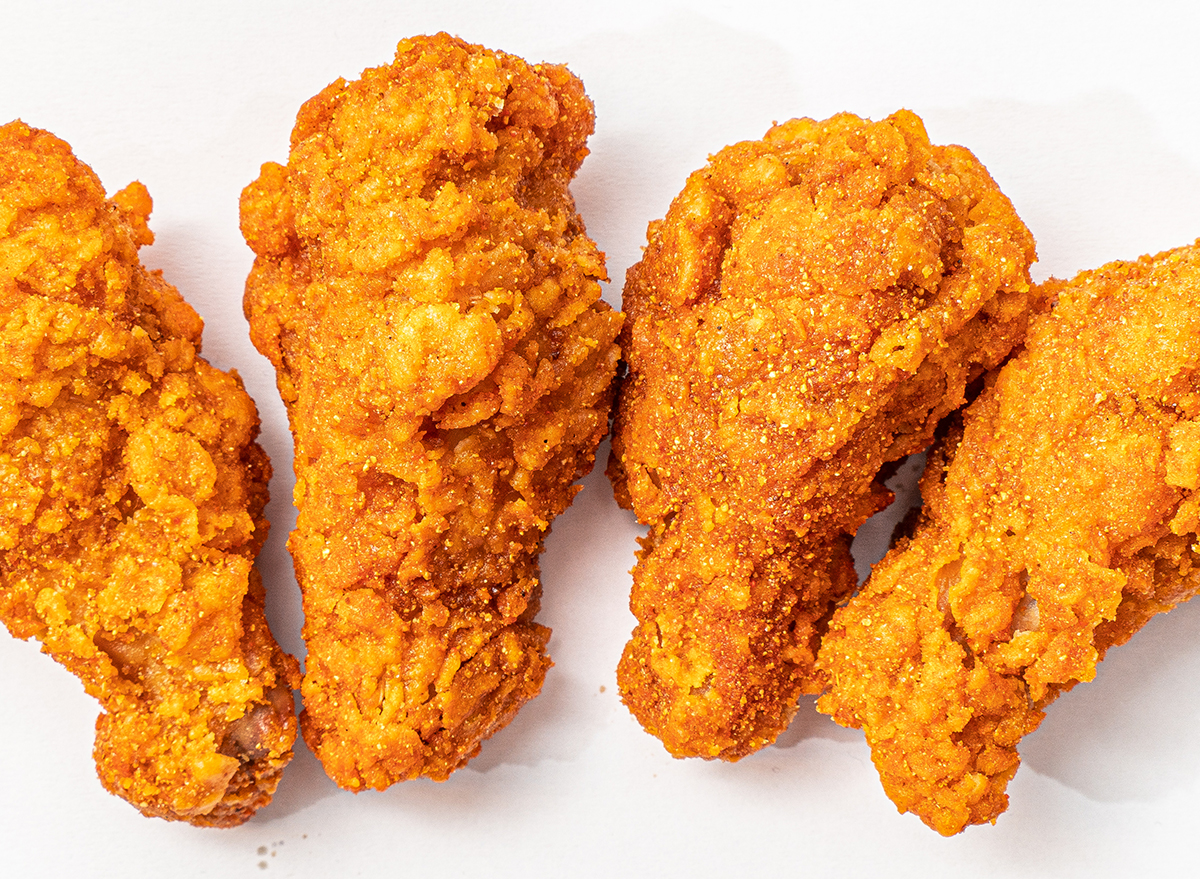
“Chicken is not inherently high in sodium, however, pieces of chicken packaged for retail sale may have been ‘enhanced’ with a salt solution,” says West Passerrello.
How to reduce your sodium intake: Check the labels on fresh and frozen poultry.
“If the Nutrition Facts Panel indicates, ‘may contain up to 15% salt solution’, check the label for sodium levels,” says West Passerrello. “Be mindful of this when adding any additional salt that a recipe may call for, or select a chicken product that was not enhanced.”
Packaged cakes and pies
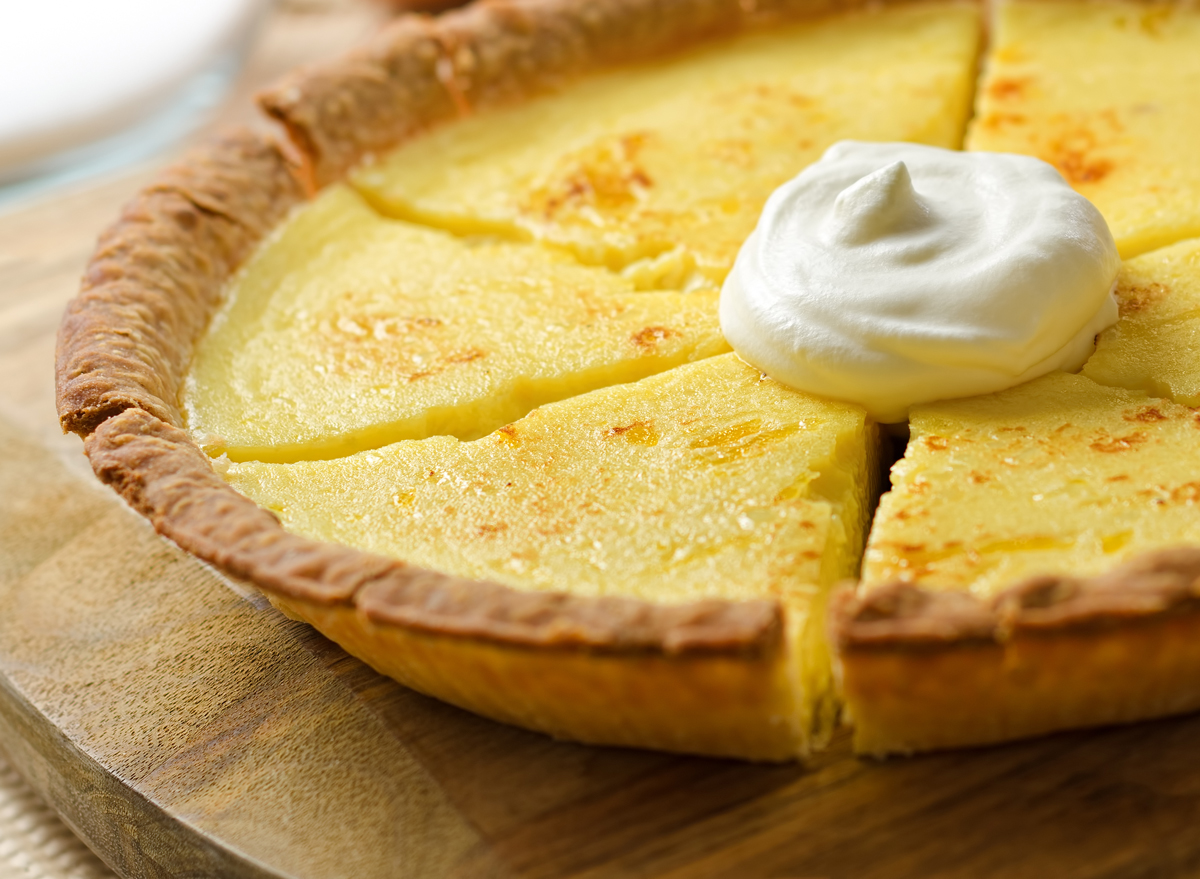
“Manufacturers add a lot of sodium is to preserve these desserts. Along with sodium, most packaged desserts are also packed with sugar and even hydrogenated oils,” says Michalczyk.
How to reduce your sodium intake: Make your own healthy desserts at home, or read the label to find the lowest salt option. “Many new brands are emerging with better-for-you treat options!” says Michalczyk.
Jarred tomato sauce
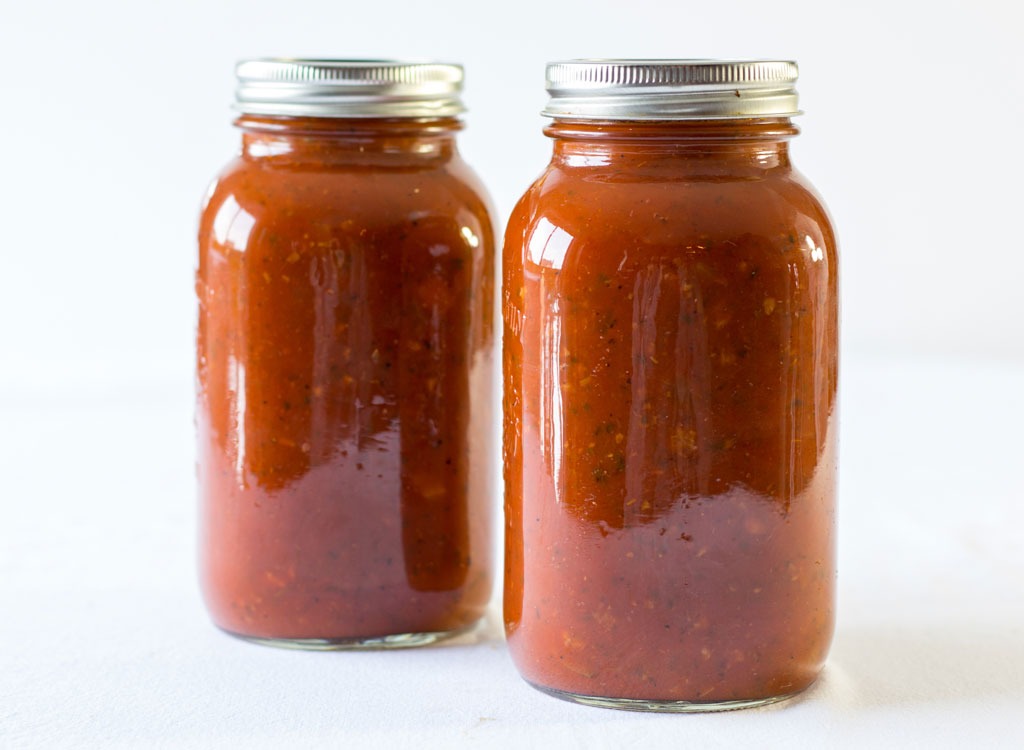
“Sodium increases palatability; however, some pasta sauce brands contain up to 1,000 milligrams per cup, so it’s important to read labels before you buy,” says Malkani.
How to reduce your sodium intake: Your best bet is to make your own! Batch cook a large pot of tomato sauce and freeze the extra for busy nights when you don’t have time to cook. Alternatively, compare sodium levels and choose low-sodium versions.
Pizza
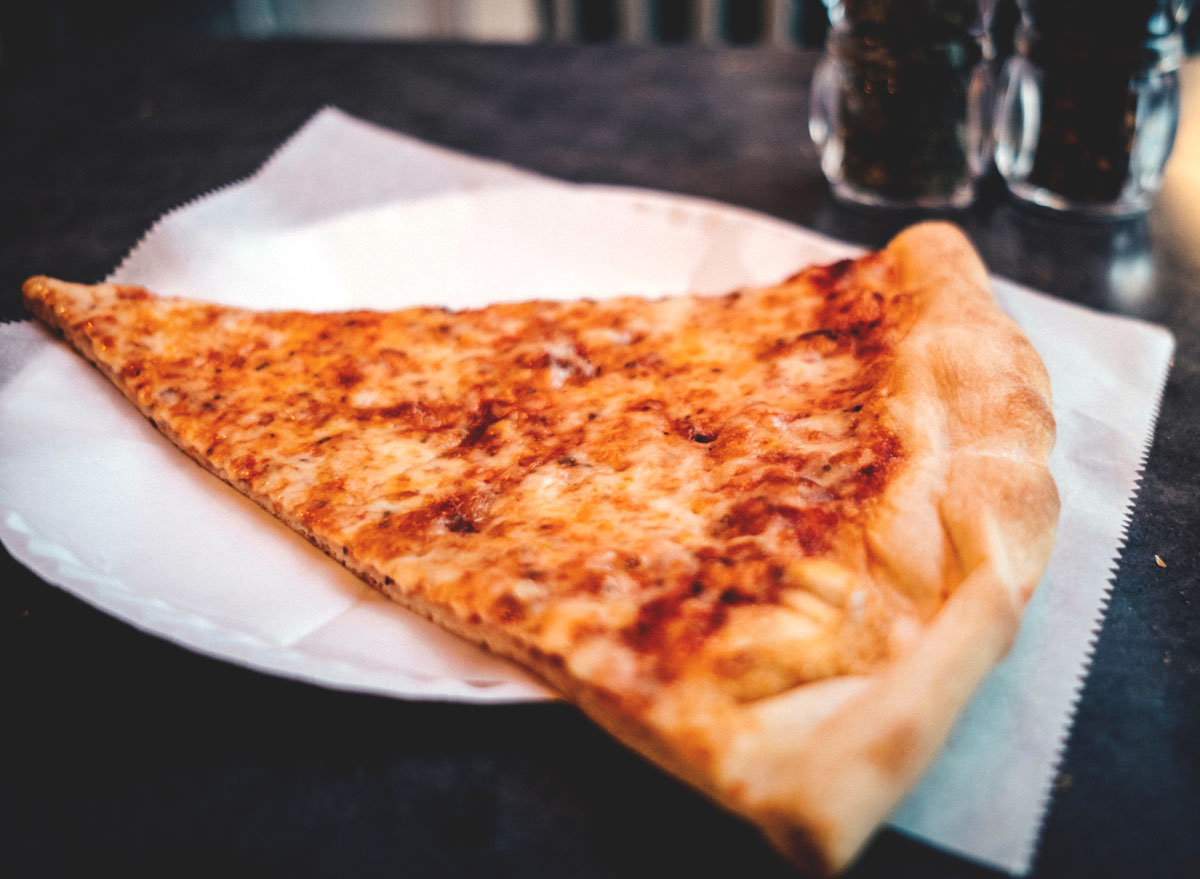
Whether you’re a fan of takeout or frozen pizza, pizza is one of the highest sodium foods, according to the CDC. Between the dough, tomato sauce, cheese, and toppings, it can quickly top your daily salt allowance.
How to reduce your sodium intake: Pay attention to your toppings, as processed meats (like pepperoni and sausage) can quickly tack on sodium. Pick veggies instead. And of course, watch your serving size.
Asian takeout
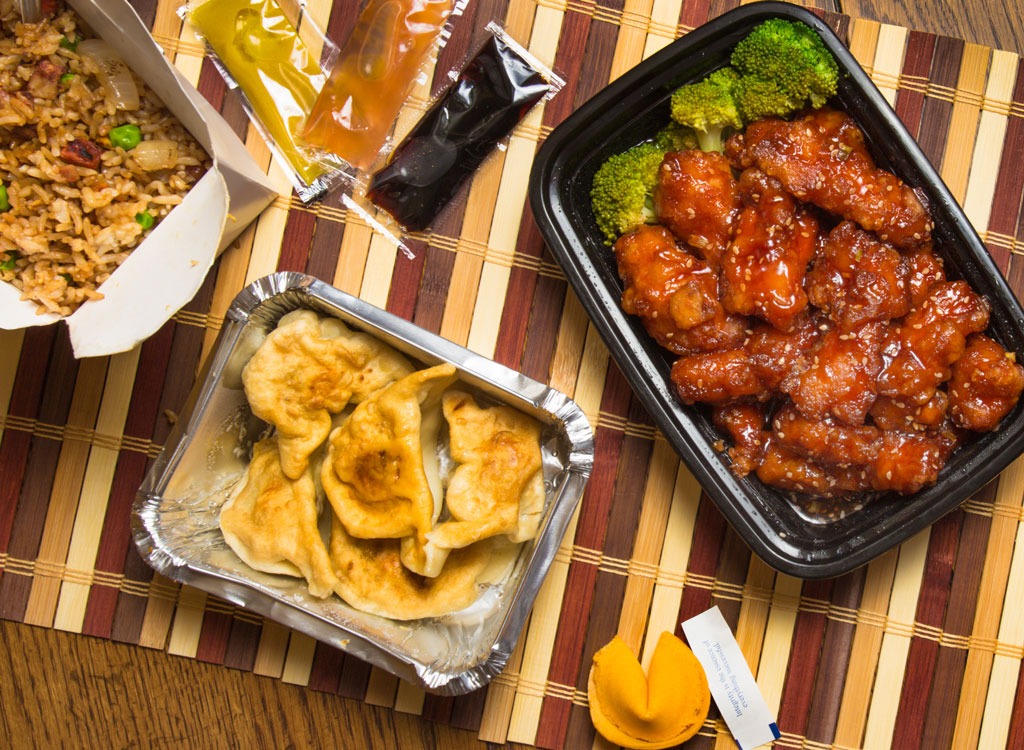
Sodium range: 1,000-3,000 mg
“Lots of thick sauces and ethnic cooking techniques require, plus salt is a huge component of the flavor of the food,” says Michalczyk. (Not to mention MSG, monosodium glutamate.)
How to reduce your sodium intake: Ask for the sauce on the side, light sauce or no sauce. “Steamed veggies are best to add on to your meal as a side dish and avoid things that are breaded and fried, which increase the sodium and fat content of the food,” says Michalczyk.
Canned beans
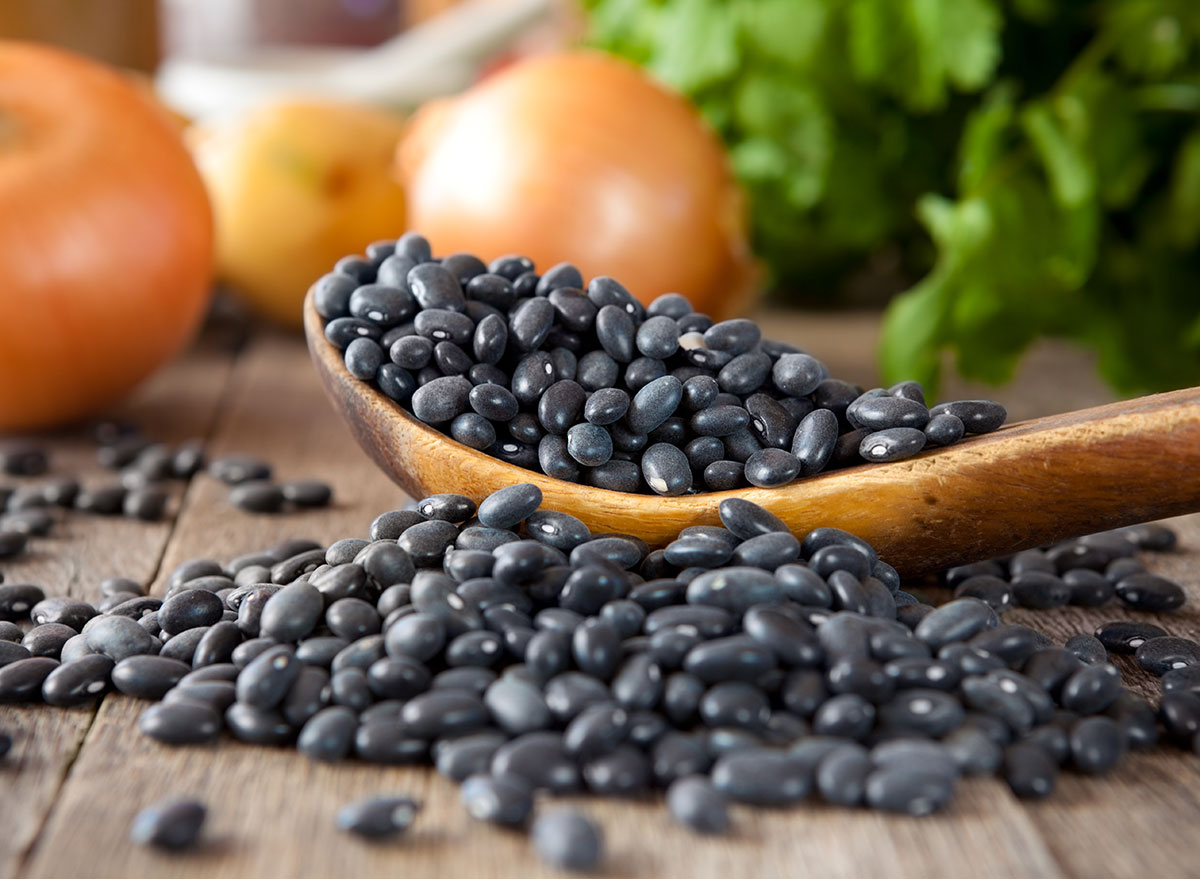
“Sodium is a flavor-enhancer as well as a preservative that helps extend shelf life of beans,” says Malkani.
How to reduce your sodium intake: “Draining and rinsing canned beans thoroughly before use can cut the sodium content almost in half,” says Malkani. “Also look for versions labeled ‘low-sodium’ or ‘no added sodium’.”
Bagels
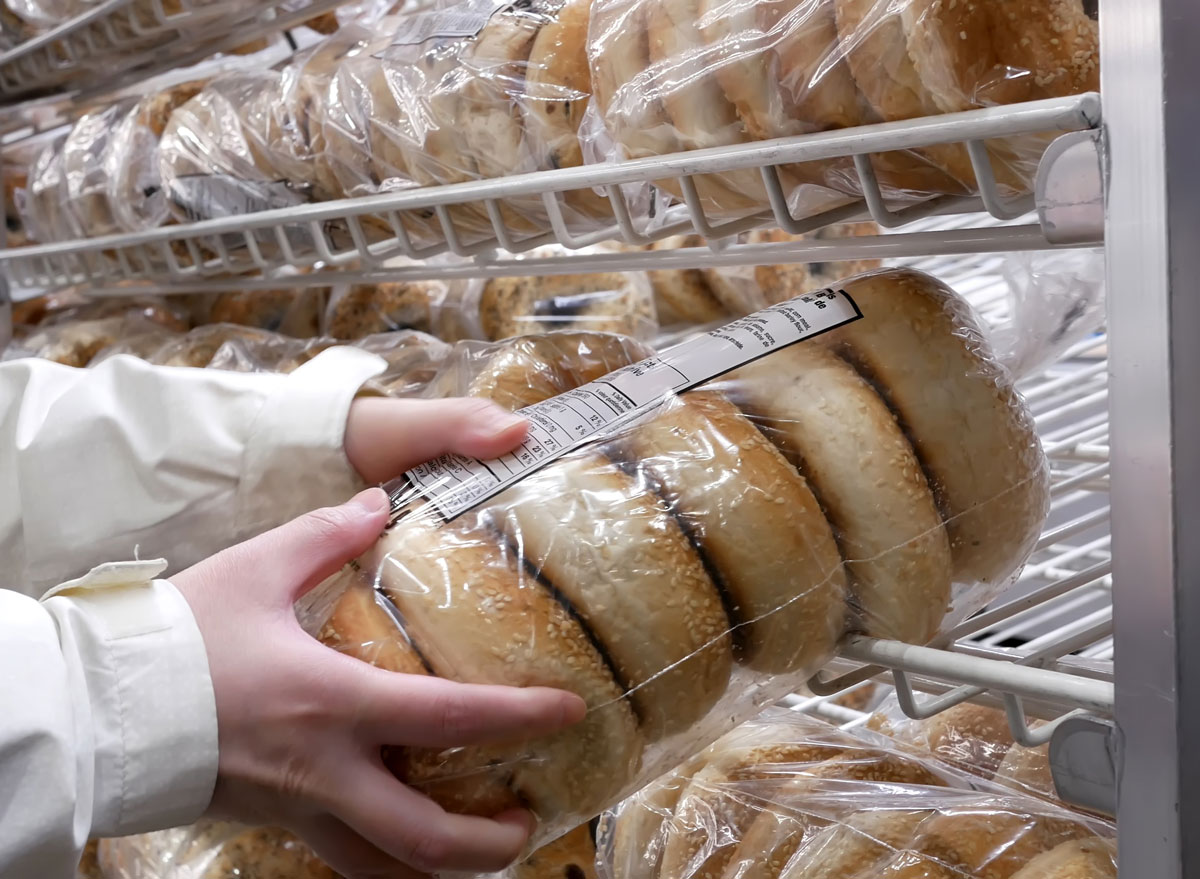
“According to the USDA, one bagel contains 430 milligrams of sodium, or almost a third of the American Heart Association’s ideal recommended daily limit. In large part, this is because bagels are large servings of bread, which are also foods high in sodium,” says Malkani.
How to reduce your sodium intake: “Keep in mind that bagels are already high in sodium without cream cheese and other salty toppings,” says Malkani. “It’s helpful to be mindful of portion sizes and consider limiting to half a bagel or less.”
Hot dogs
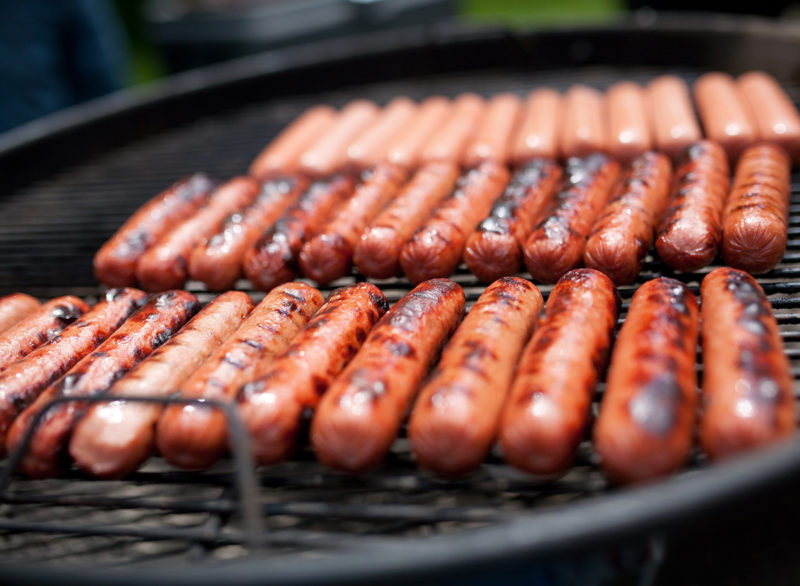
Unfortunately, this iconic American staple is one of the biggest sodium offenders (as deemed by the CDC.) Hot dogs are processed and are thus high in sodium and preservatives (nitrites and nitrates) to maintain longer shelf life. If that’s not bad enough, processed meat has also been linked to an increased risk of colon cancer.
How to reduce your sodium intake: Look for “reduced sodium” dogs when you can. And even better, look for versions that are nitrite and nitrate-free.
Bottled salad dressings
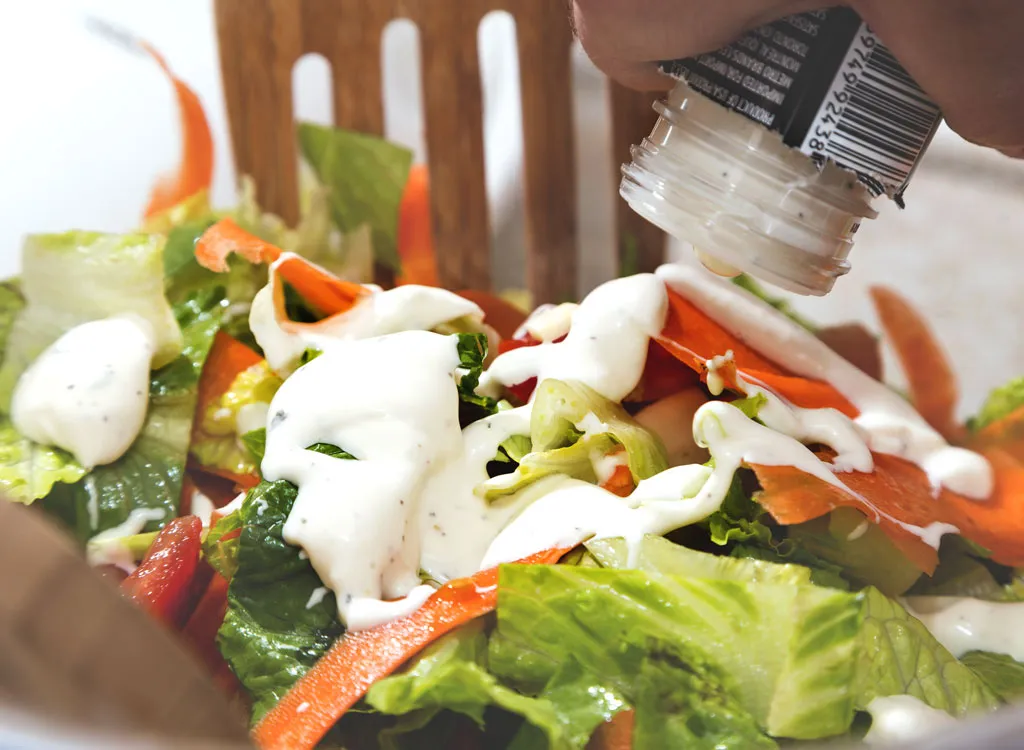
“Salt is added to bottled salad dressings both for taste and to extend shelf life,” says Wolfe.
How to reduce your sodium intake: Besides buying a healthy salad dressing, like a low sodium option, at the store, you can also try making your own. “Make your own salad dressing with a good balsamic vinegar and olive oil plus just a pinch of pink salt, pepper, and garlic,” says Wolfe.
Tortillas
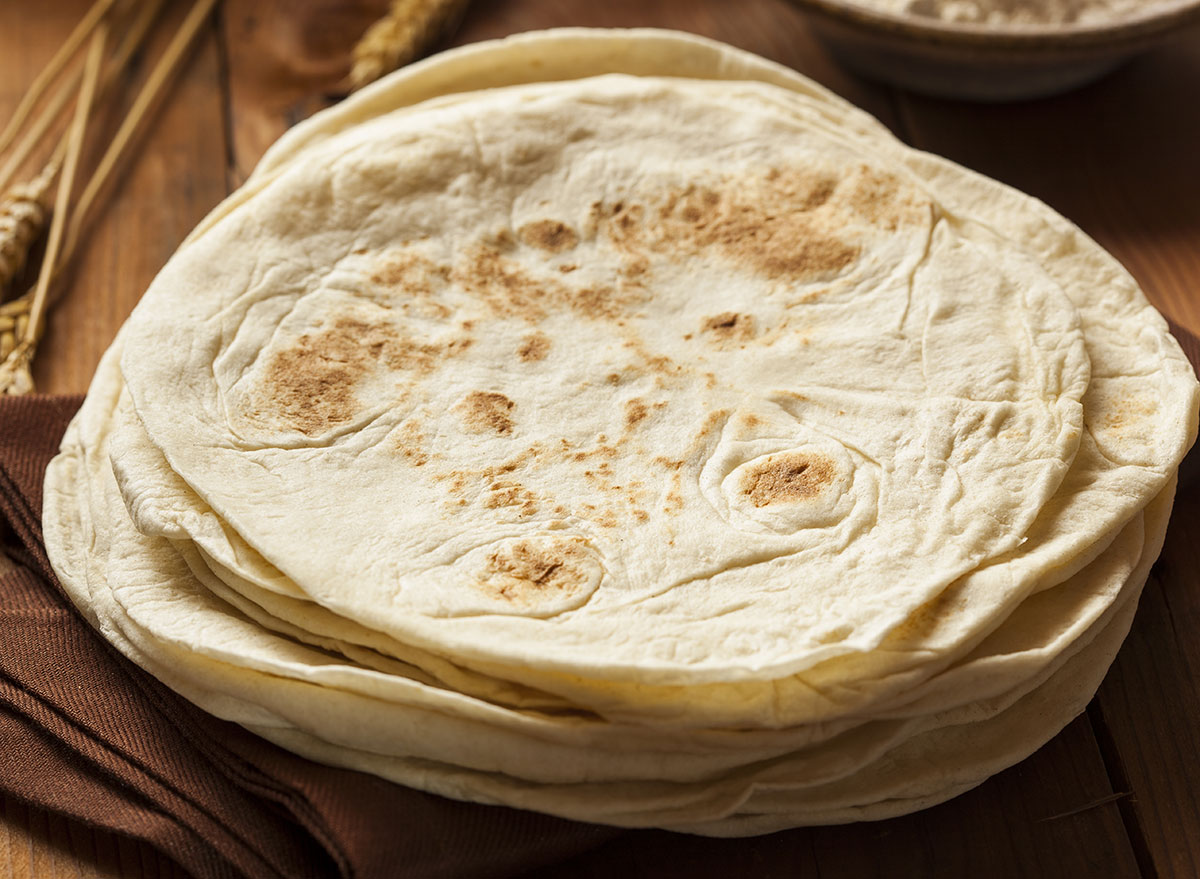
To be clear, we’re referring to flour tortillas and not corn tortillas. Flour tortillas are higher in sodium due to the fact that they’re usually baked with baking soda and baking powder (both forms of sodium).
How to reduce your sodium intake: Stick with corn tortillas, which are usually less processed than flour ones. Plus, they have more fiber and magnesium.
Table salt
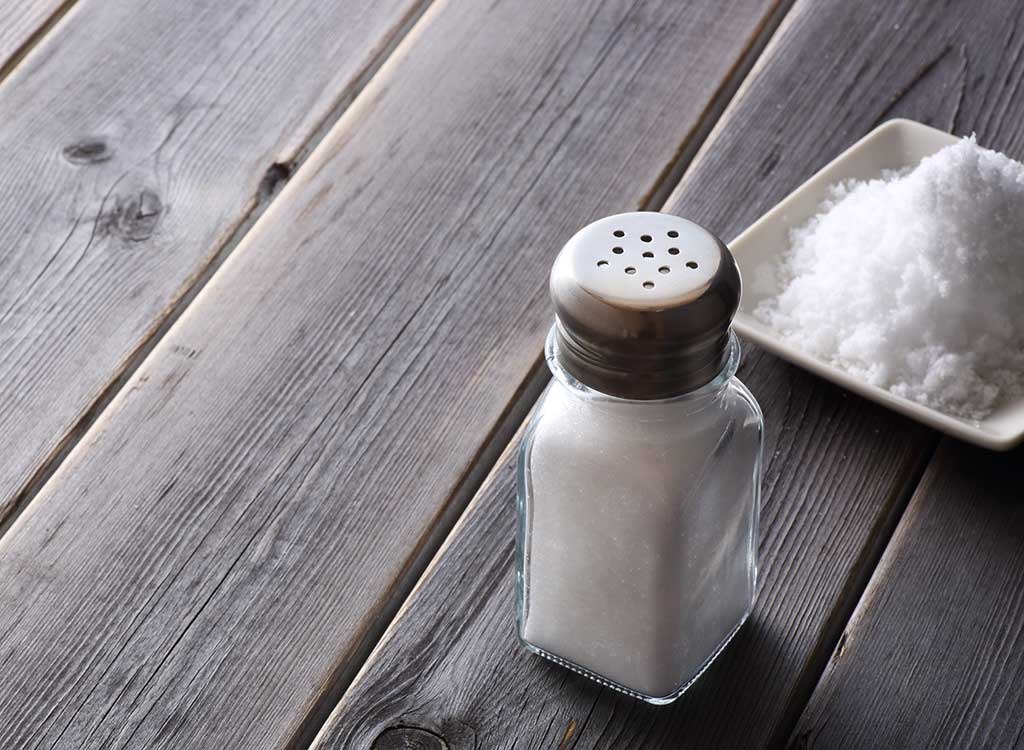
Sodium range: 590 mg per 1/4 teaspoon
You’re probably reading this and are thinking, why is salt on this list? It’s simple: adding your own dashes of the shaker to prepared food can seriously increase the sodium content of any dish.
How to reduce your sodium intake: “Swap table salt for high-quality salt that you have to grind yourself,” says Wolfe. “It may make you less likely to just douse everything with this additional step.”
